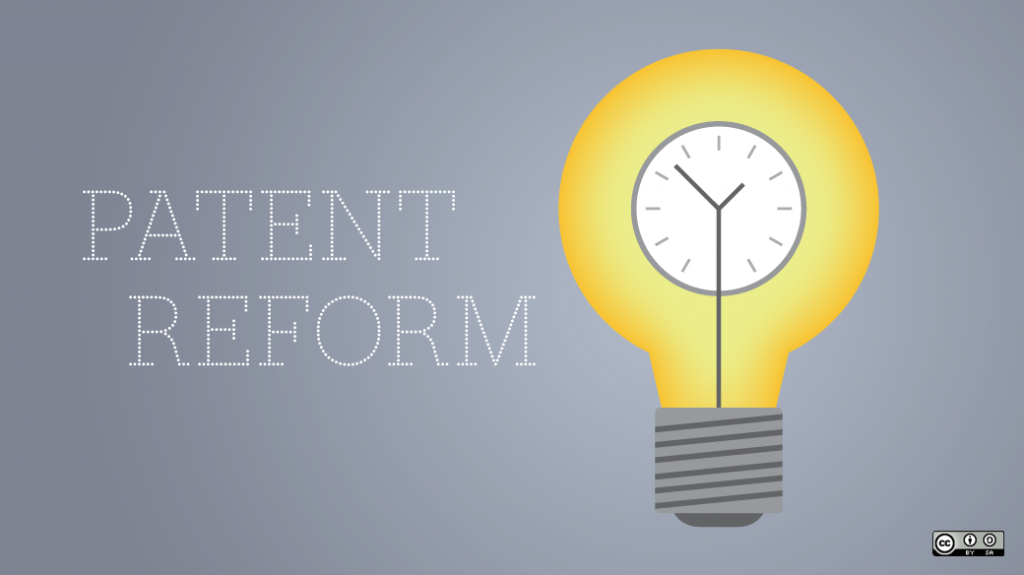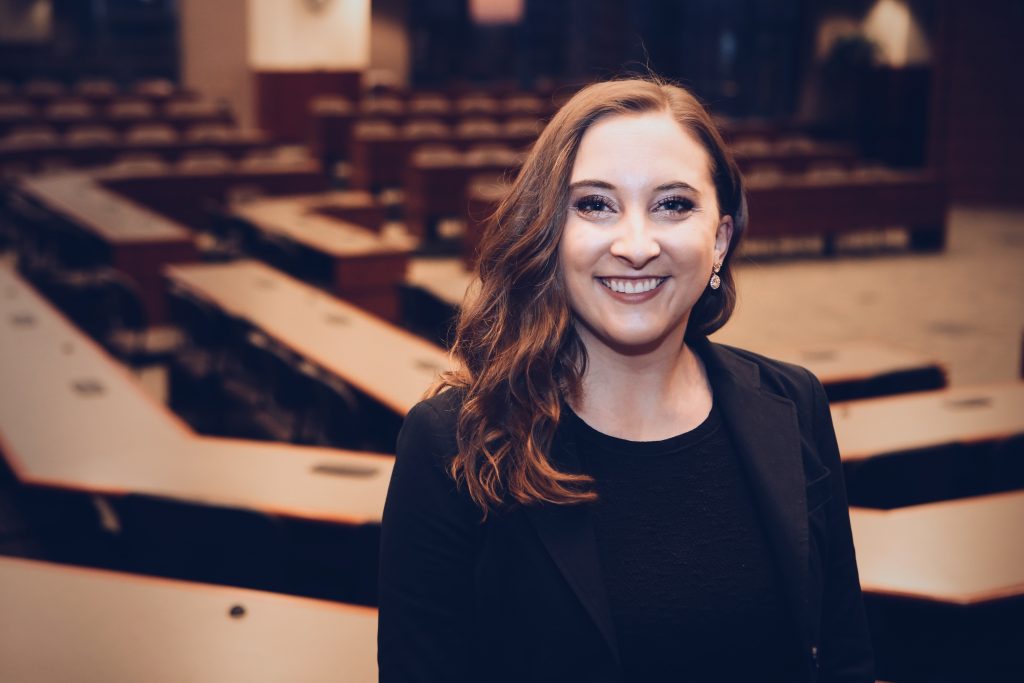It’s a case with a humble beginning, just three Red Line stops south of Loyola’s Corboy Law Center, in the United States District Court for the Northern District of Illinois. But this case also has the potential to effect major and much needed change in the realm of patent law. The Honorable John Z. Lee heard HP Inc. v. Berkheimer in 2016, and subsequently, the case worked its way through the appellate courts. The Supreme Court hasn’t yet decided if it will hear the case because for the last eleven months the Petition for Writ of Certiorari for Berkheimer was pending a submission of an amicus brief from the Solicitor General. The brief—which recommended that the Court deny the Berkheimer petition unless another case, Athena v. Mayo, is granted certiorari—was filed with the Court last week. This case could be one of the first patent subject matter eligibility cases to be heard by the Supreme Court in over five years—despite over 40 rejected petitions on the same issue. Subject matter eligibility matters to inventors, investors, and other patent stakeholders, because it directly impacts what does and does not receive a patent, and thus who does or doesn’t have the right to exclusively market and sell their invention as a reward for their creativity and ingenuity. However, the current test for patent subject matter eligibility, introduced in 2014, has been very difficult for the lower courts to administer. If the Supreme Court decides to grant certiorari for Berkheimer, it will have an opportunity to clarify the test. By more explicitly defining what can and cannot be patented, the Supreme Court, in theory, might better align the expectations of patent examiners, judges, and inventors, allowing the patent system to function more efficiently.

How is Patent Subject Matter Eligibility Determined?
Subject matter eligibility is the threshold test under the Patent Act, 35 U.S.C. § 101, for determining whether or not an invention can be patented. The Patent Act also requires the invention to be useful, new, and non-obvious, but only after it is established that the invention concerns proper subject matter. Under the relevant statute, the types of patent eligible subject matter are: (1) processes; (2) machines; (3) manufactures; and (4) compositions of matter. However, long-standing judicial precedent has created three exceptions to the four statutory categories. Even if an invention is a process, machine, manufacture, or composition of matter, it is not patent eligible if its subject matter is deemed: (1) abstract; (2) a natural phenomenon; or (3) a law of nature.
The theory behind the Supreme Court’s exceptions is to prevent the “building blocks” of human ingenuity from being protected by a patent. After all, the whole purpose of a patent under the “Progress Clause” of the Constitution (Article I, Section 8) is to promote the arts and sciences. In introducing the judicial exceptions, the Supreme Court hoped to construct a patent system that would effectively incentivize innovators to create, but not grow overbroad to the extent that it becomes logistically or financially difficult to promote progress because everything is patent-protected.
To try and strike this balance, the Supreme Court created a test for inventions that fall under one of the four statutory categories, but also might be one of the three judicial exceptions to patent eligibility: the Alice/Mayo test. Named for the 2014 and 2012 Supreme Court decisions that have most recently defined it, the Alice/Mayo test has two steps: (1) the court must determine whether the patent application “claims” protection for some abstract idea or other judicial exception, and if so, (2) the court must determine whether that claim, when read in context with the rest of the patent application, also describes some “inventive concept.” Only then can a judicially excepted invention be awarded a patent.
Why is Patent Subject Matter Eligibility an Important Issue?
While the Alice/Mayo test was intended to help the lower courts and the USPTO navigate subject matter eligibility analysis where the invention seemed to be statutorily acceptable but was also a judicial exception, both have had a tough time applying it. The Federal Circuit has been accused of issuing inconsistent opinions and applying analysis of varying depth. USPTO patent examiners have been accused of administrative malpractice for failing to provide enough evidential support to defend conclusions based on the Alice/Mayo test. This year alone, the USPTO has issued two new guidance documents to help patent examiners with their analysis this year alone—the 2019 Revised Patent Subject Matter Eligibility Guidance and the October Update.
One of the biggest problems is that Alice/Mayo test is most often applied to inventions in the software and biotechnology sectors, major areas of innovative growth in modern America. And because subject matter eligibility is really the threshold test for patentability, how the Alice/Mayo test is applied has largely dictated what does and doesn’t get a patent. Most of the patent community is in favor of weakening the Alice/Mayo test, making it easier to find inventions subject matter eligible, leaving the heavy lifting to the other parts of the patent eligibility inquiry mentioned above: the usefulness, novelty, and non-obvious analyses. But there are some big players (*ahem* Google) who like the strong patent eligibility test. They argue the software sector, in particular, benefits from less patented technology, allowing innovators to freely build from what already exists, as well as the test’s inherent protection from patent trolls.
Regardless of whether a strong or weak patent eligibility test drives innovation, it is clear that a confusing legal standard does not. It is frustrating to would-be investors, who cannot predict whether they will see a return-on-investment, and to inventors who would otherwise patent their creations, but see it as a futile exercise. And it is frustrating to those who have to apply it. At the recent Intellectual Property Law Association of Chicago (IPLAC) Symposium, a judge from the Northern District stated that he doesn’t care what the test for patent subject-matter eligibility ends up being. He just wants a test that can be practically applied, so that he doesn’t have to hear the case a second time (because the Federal Circuit decides that a different legal analysis would be more proper, and sends the case back to him on remand). He isn’t the only judge that feels this way, even judges at the appellate level are frustrated. Judge Stoll, of the Federal Circuit, recently stated, “[o]ne of the more challenging issues I’ve seen since I’ve been at the court is the Alice/Mayo test. It is a difficult line of cases to administer.” Incidentally, Judge Stoll sat on the panel that heard and decided Berkheimer in the Federal Circuit.
Why is HP Inc. v. Berkheimer a Case to Keep an Eye On?
The Supreme Court considered Berkheimer during conference in early January 2019. Instead of outright accepting or rejecting the petition for certiorari, the justices decided to ask the Solicitor General to submit an amicus brief describing the position of the federal government regarding patent subject matter eligibility before they make their final decision. Berkheimer has done what few other patent subject matter eligibility cases have been able to do in the last five years: catch the attention of the Supreme Court. Inventors, investors, and other stakeholders wait with bated breath to see if the Court will finally grant certiorari to clarify the confusing state of the Alice/Mayo test.
However, it is important to note that even if the Supreme Court decides to deny Berkheimer, as the recent brief from the Solicitor General recommended, the patent subject matter eligibility problems described above could still be addressed by way of legislation. Senators Tillis and Coons, as well as other lawmakers, are drafting a proposed amendment to the Patent Act, including changes to the section defining patent subject matter eligibility. As they continue to craft their proposal, they have hosted several hearings on the topic, the most recent in late October. In the meantime, Berkheimer, a case which started its journey in the Illinois district court, just might redefine the course of American patent law.

Assistant Blogger
Loyola University Chicago School of Law, J.D. 2021
